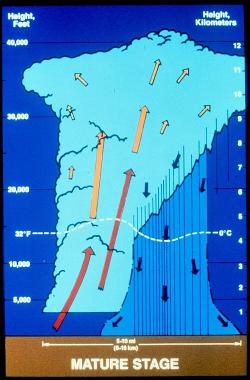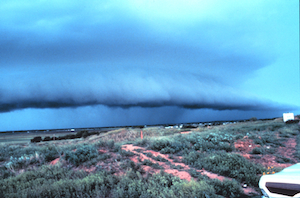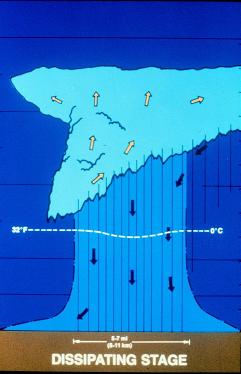|
Figure 8.23 Mature Stage The second stage is the mature stage of development. During the mature stage warm, moist updrafts continue to feed the thunderstorm while cold downdrafts begin to form. The downdrafts are a product of the entrainment of cool, dry air into the cloud by the falling rain. As rain falls through the air it drags the cool, dry air that surrounds the cloud into it. As dry air comes in contact with cloud and rain droplets they evaporate cooling the cloud. The falling rain drags this cool air to the surface as a cold downdraft.
Figure 8.24 An approaching thunderstorm with a lead gust front. Cold air from the downdraft pushes warm moist air up forming a "shelf cloud". (Courtesy NOAA Severe Storms Lab. Source) In severe thunderstorms the region of cold downdrafts is separate from that of warm updrafts feeding the storm. As the downdraft hits the surface it pushes out ahead of the storm. Sometimes you can feel the downdraft shortly before the thunderstorm reaches your location as a cool blast of air.
The final stage is the dissipating stage when the thunderstorm dissolves away. By this point, the entrainment of cool air into the cloud helps stabilize the air. In the case of the air mass thunderstorm, the surface no longer provides enough convective uplift to continue fueling the storm. As a result, the warm updrafts have ceased and only the cool downdrafts are present. The downdrafts end as the rain ceases and soon the thunderstorm dissipates.
|



